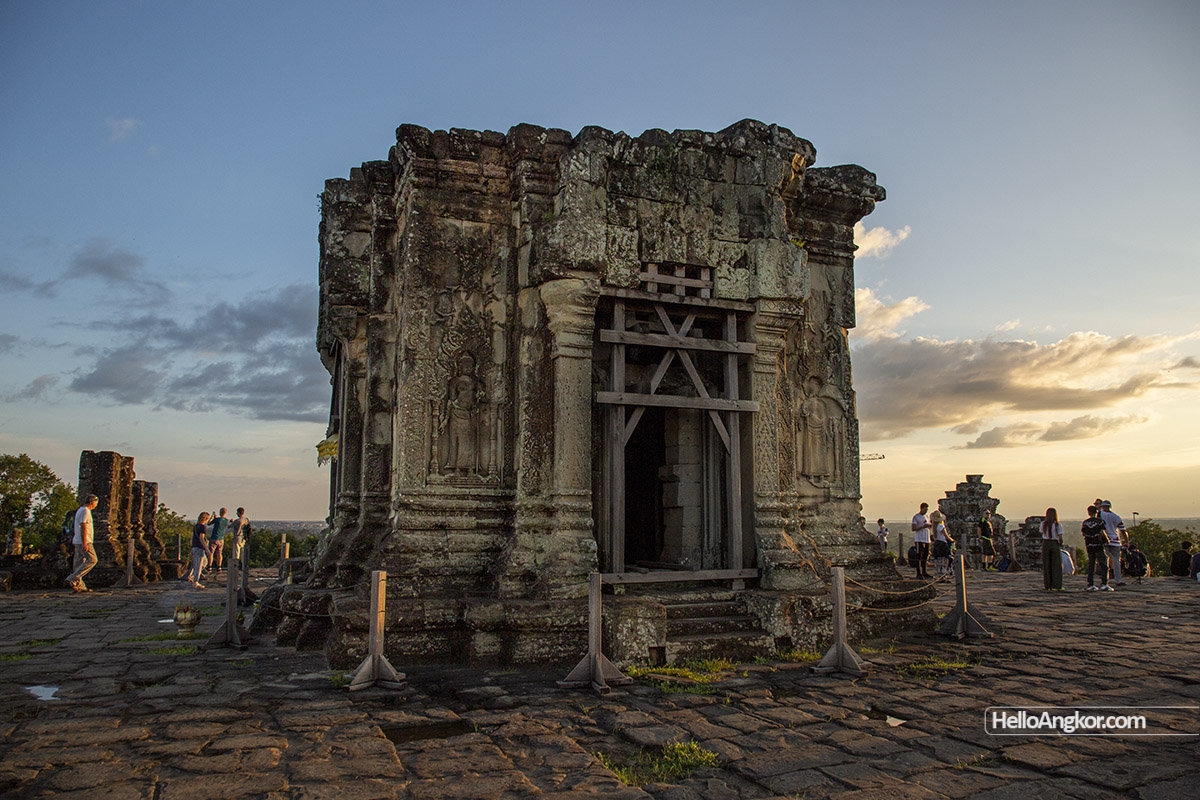- Area: Siem Reap Province > Krong Siem Reab > Sangkat Kouk Chak > Kôk Chan Village
- | Type: Ancient Remains & Temples
Bakheng Temple sits atop the 65m rise that carries the same name, Phnom Bakheng and looks across the plains below with Angkor Thom to its north and Angkor Wat to its southeast, both of which it predates by more than two centuries. It’s a monumental construction that followed the beliefs of the time and the concept of the temple mountain as a representation of the famed Mount Meru.
Built at the end of the 9th century, the temple features an eastern avenue, an outer enclosure wall, two libraries on the east side, a series of satellite shrines, and then, the grand five-tiered pyramid which was originally topped with a quincunx of towers (one principle tower in the center surrounded by four smaller towers).
The lower tiers of this massive sandstone pyramid are lined with smaller shrines, 12 per tier, replicating the style of the main shrine. Together with the brick towers that surrounded the base of the pyramid, it is believed there would have been 108 shrines in total, all installed with divinities.
Atop the pyramid, the central shrine is extremely ornate with a high standard of workmanship that was typical of the period. Floral, geometric, and leaf patterns abound on the pilasters, often inset with small deity figures and beautifully executed reliefs of enshrined devata flank the doorways. Each door is open and some still retain decorative door columns and lintels, while above the doorways the pediments are quite decayed although some figures can be made out. Not a lot remains of the four towers that once surrounded the central shrine but the remnants are interesting nonetheless.
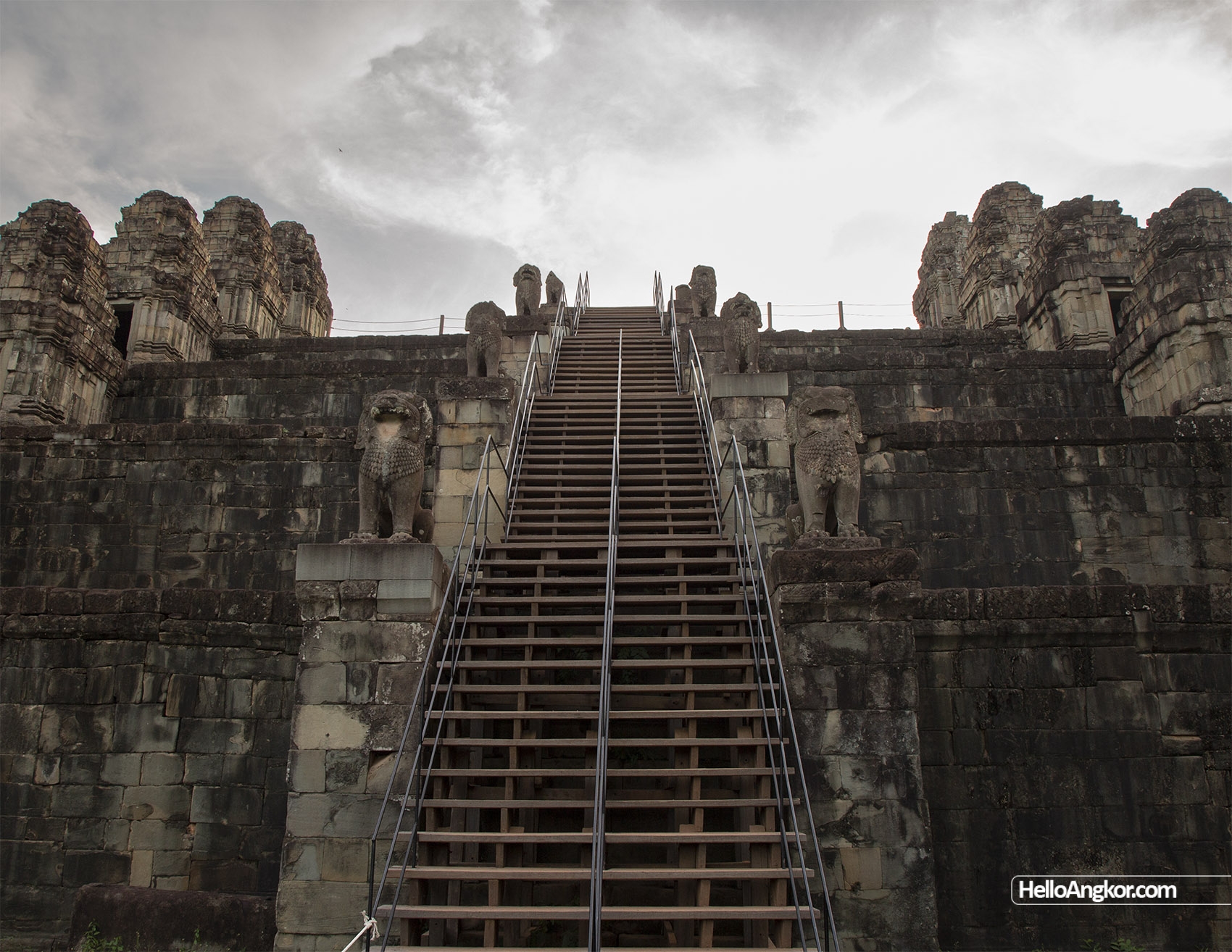

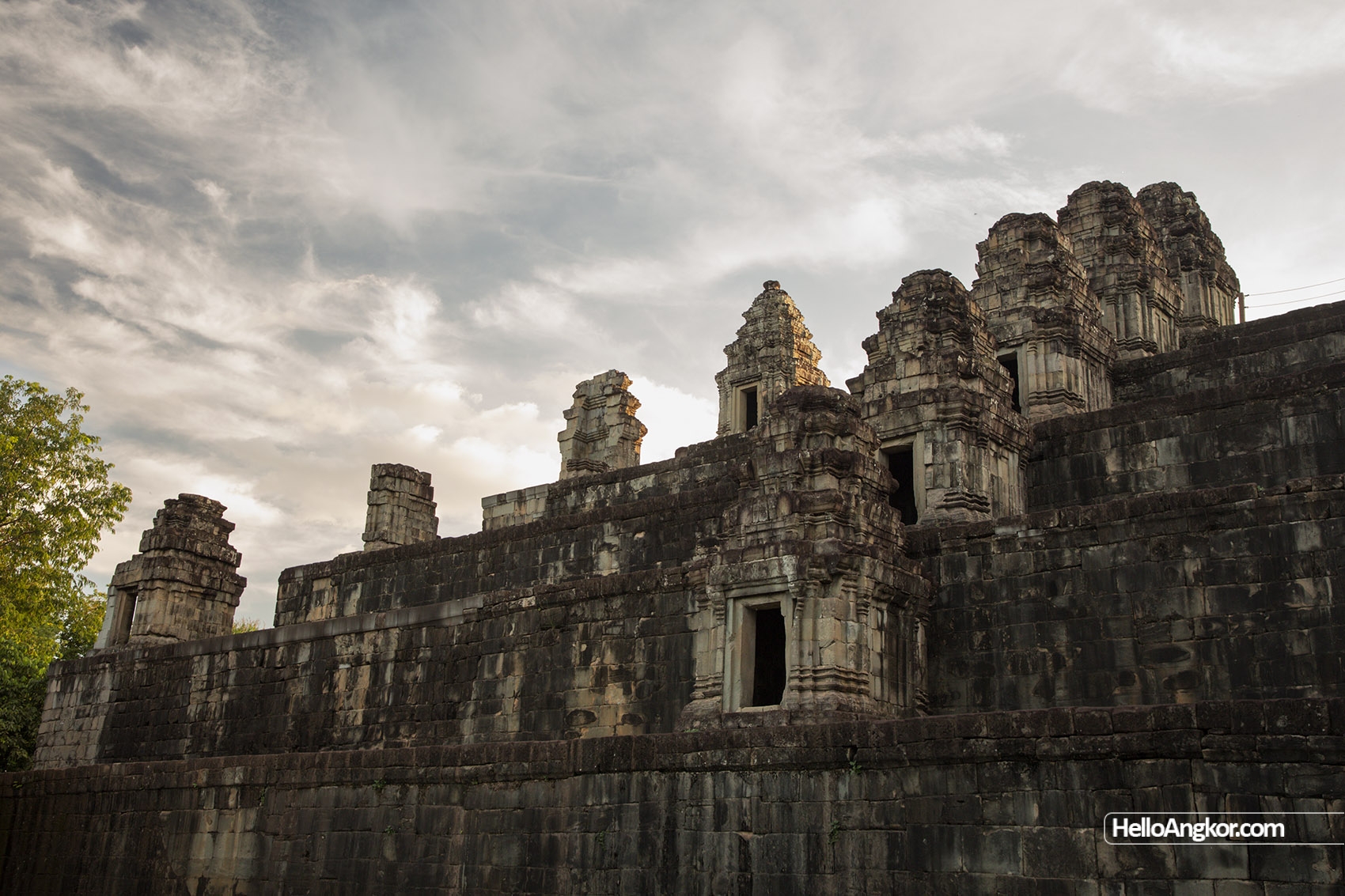
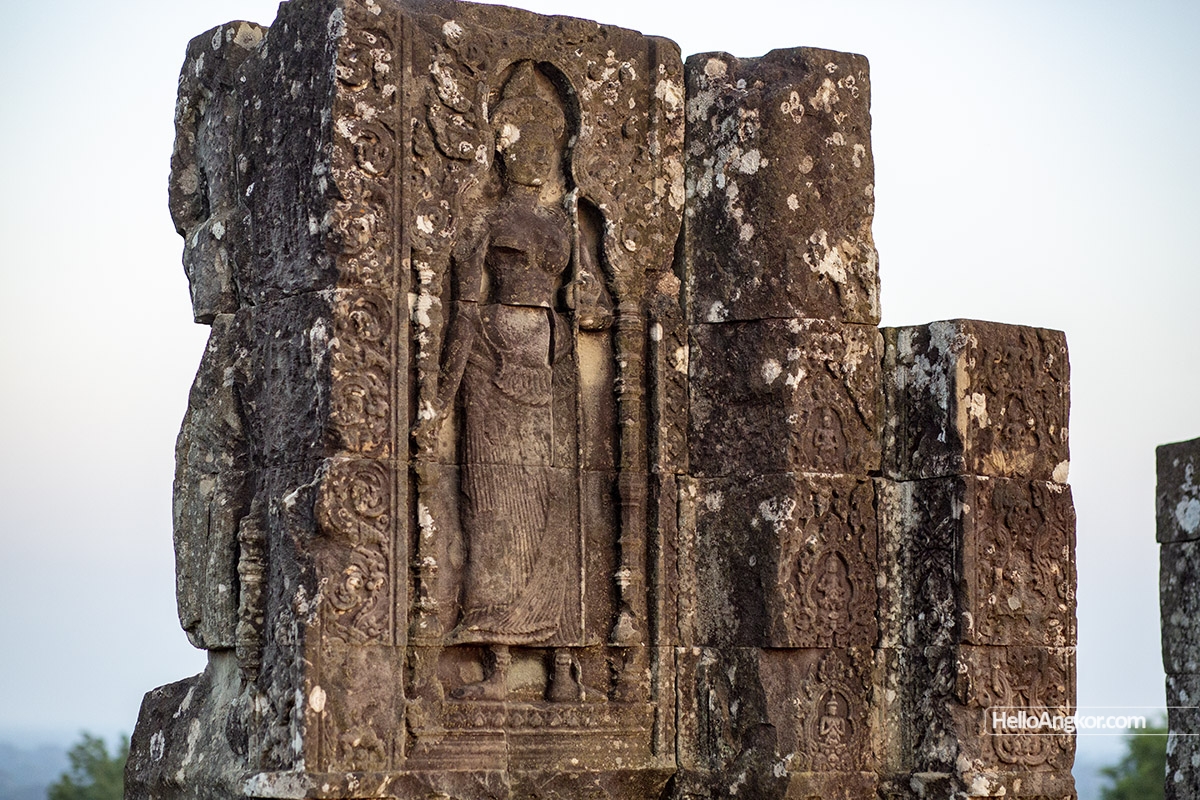
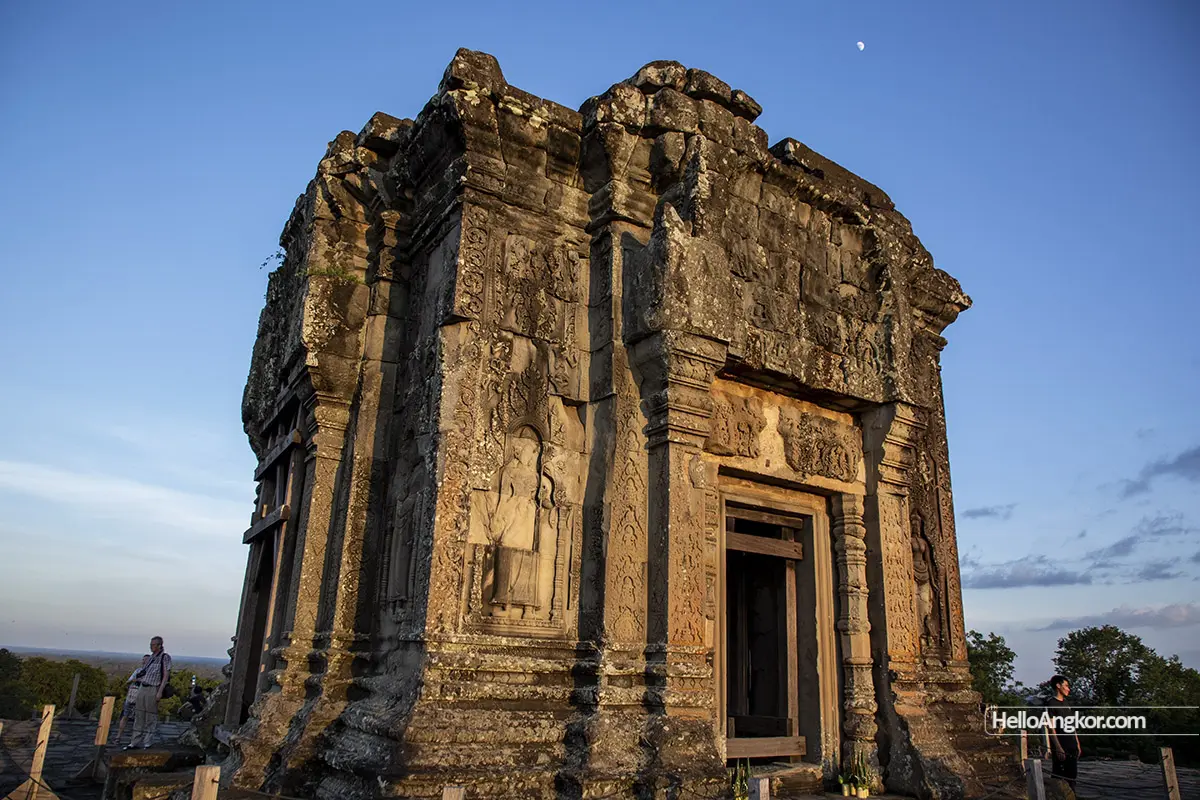
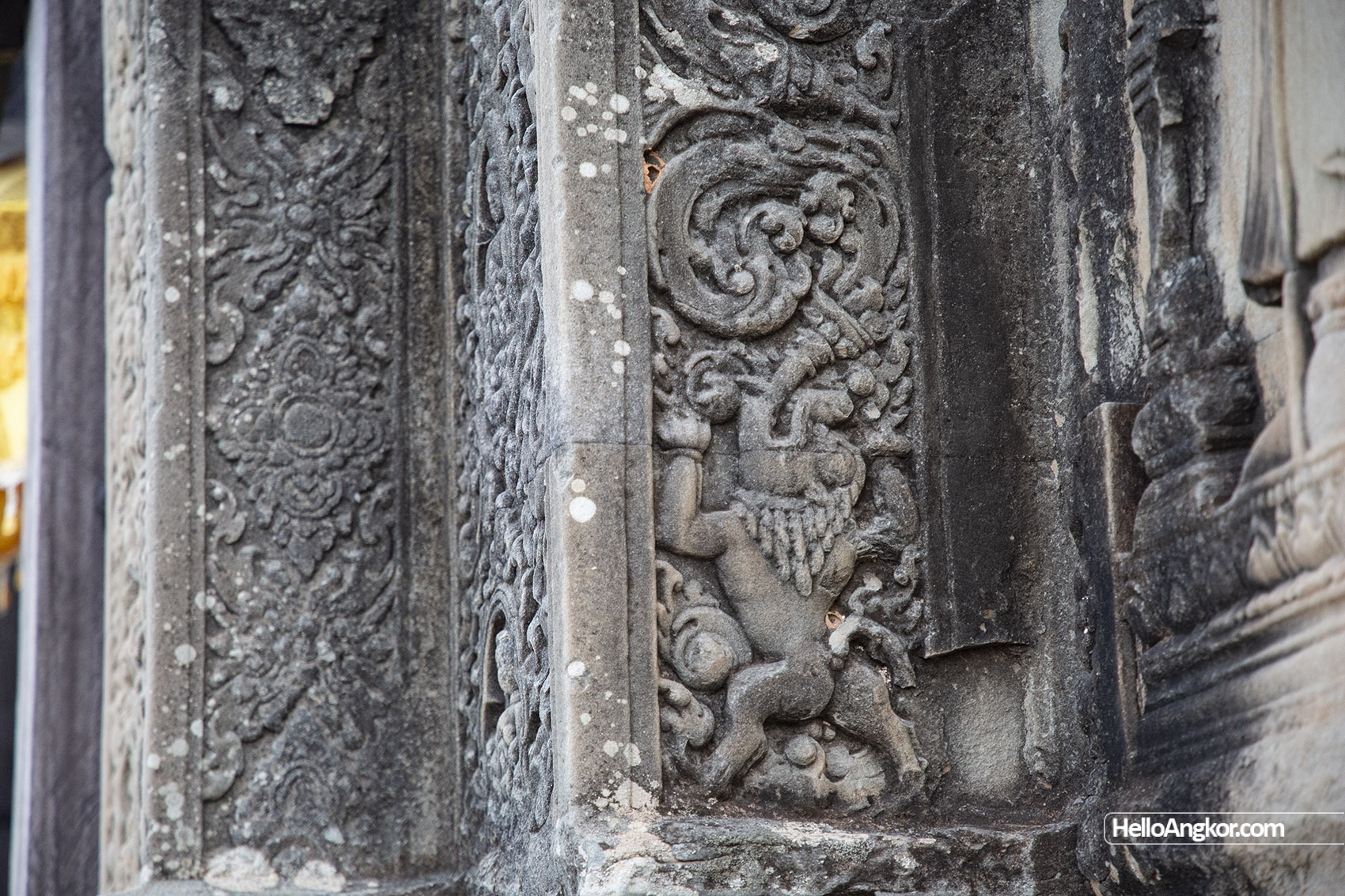
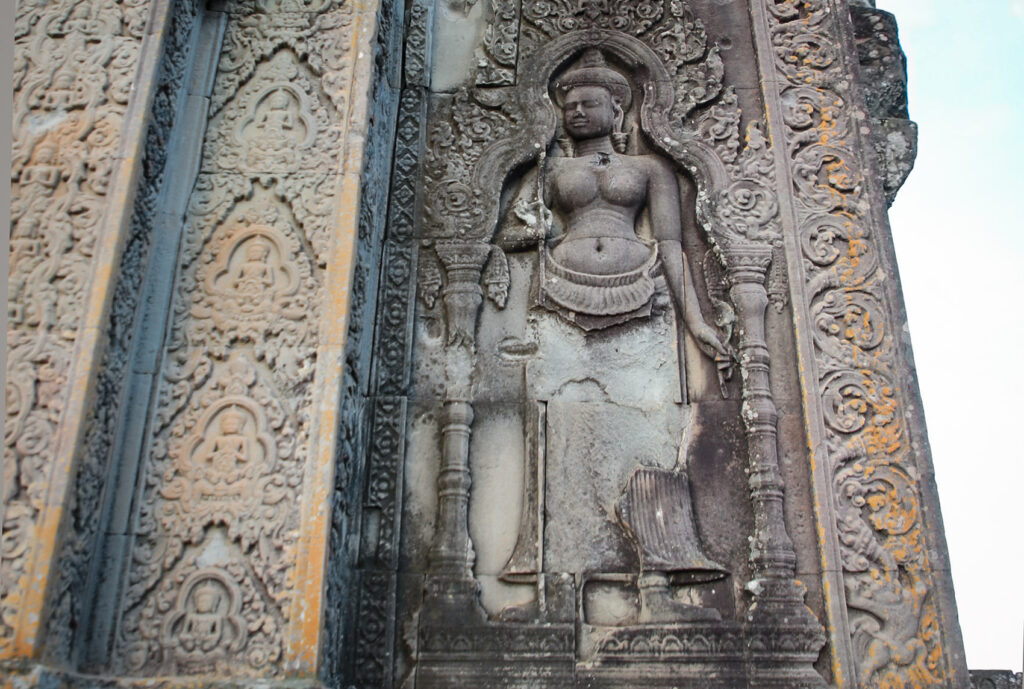
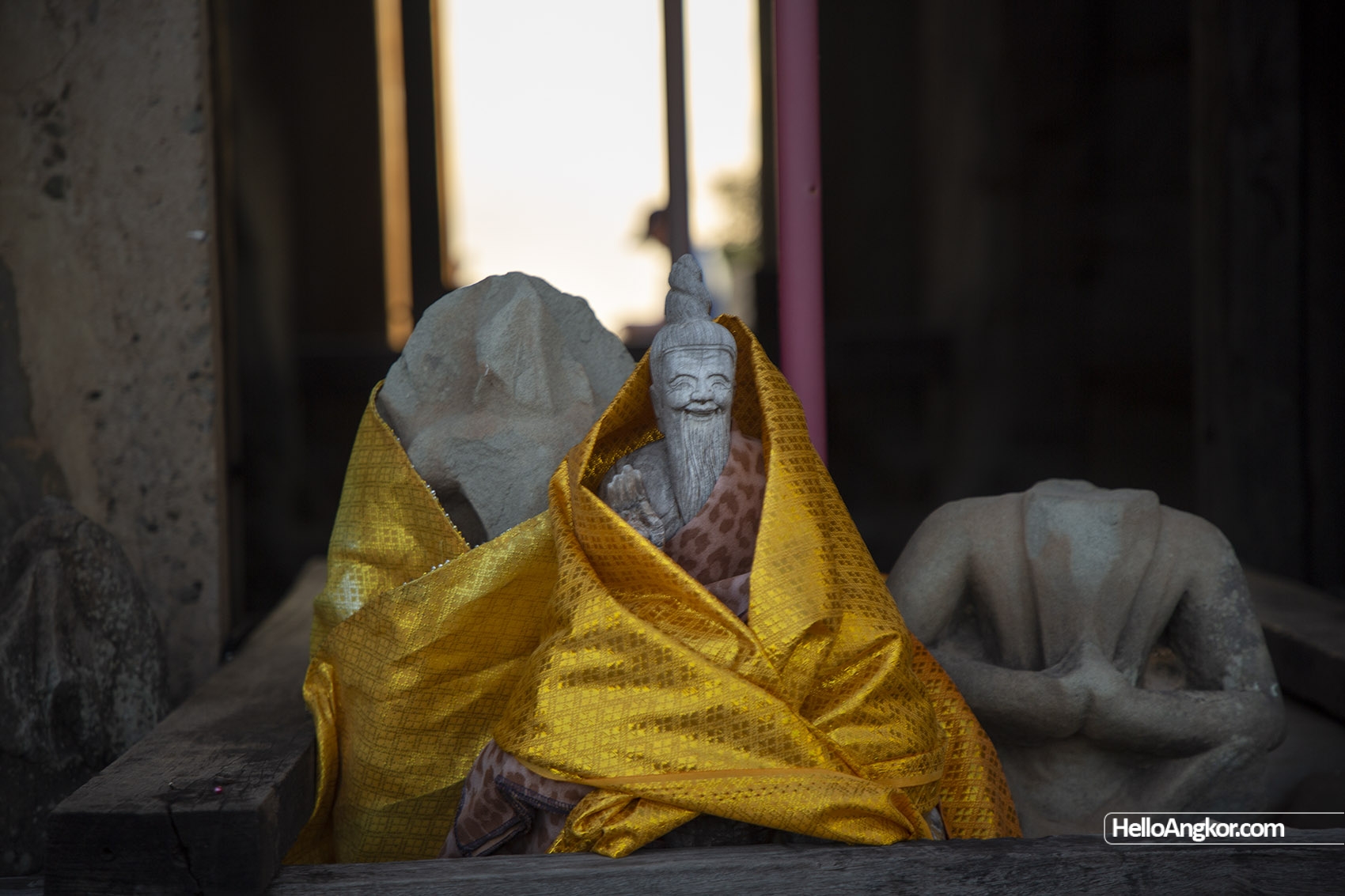
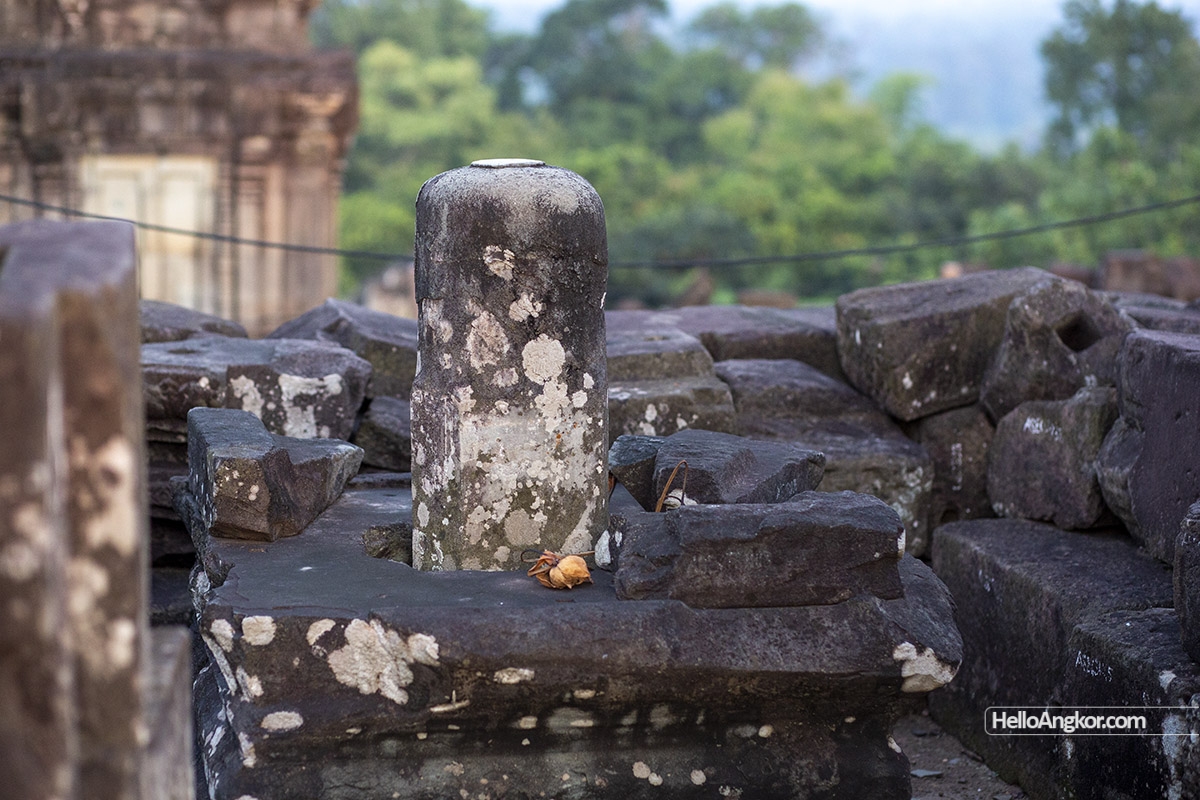
At the bottom of the pyramid’s western staircase, you’ll find a statue of the bull from Hindu mythology, Nandin and as mentioned, there are brick shrines surrounding the pyramid base, although most of these are under restoration and closed to the public. On the eastern side, there are several interesting remnants including lintels and an ornate pedestal. The two libraries are also quite interesting, especially the one in the south which features a collection of Buddha statues inside and a trio of statue remnants outside its entrance.
Continuing east, there are the remnants of the wall, gopura, and a very sacred Buddhapada (Buddha’s footprint) with a paved causeway continuing to the traditional eastern steps down to the bottom of the mountain.
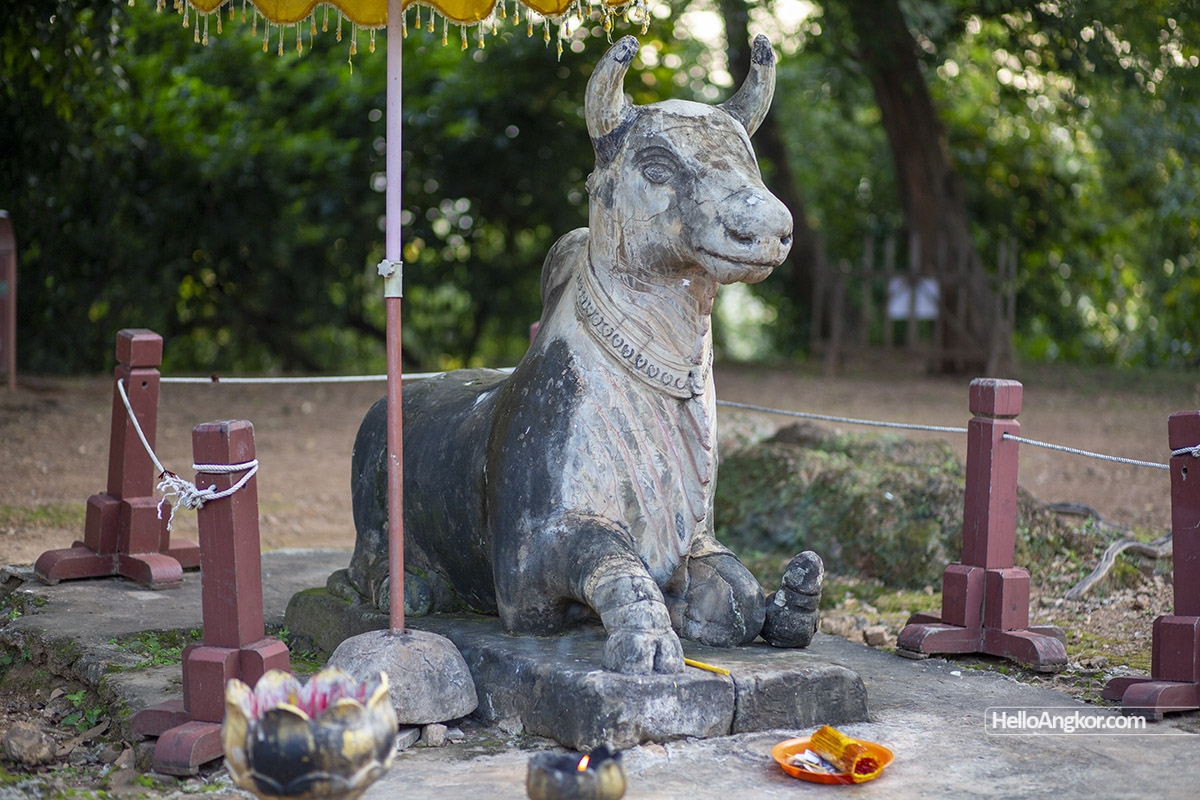

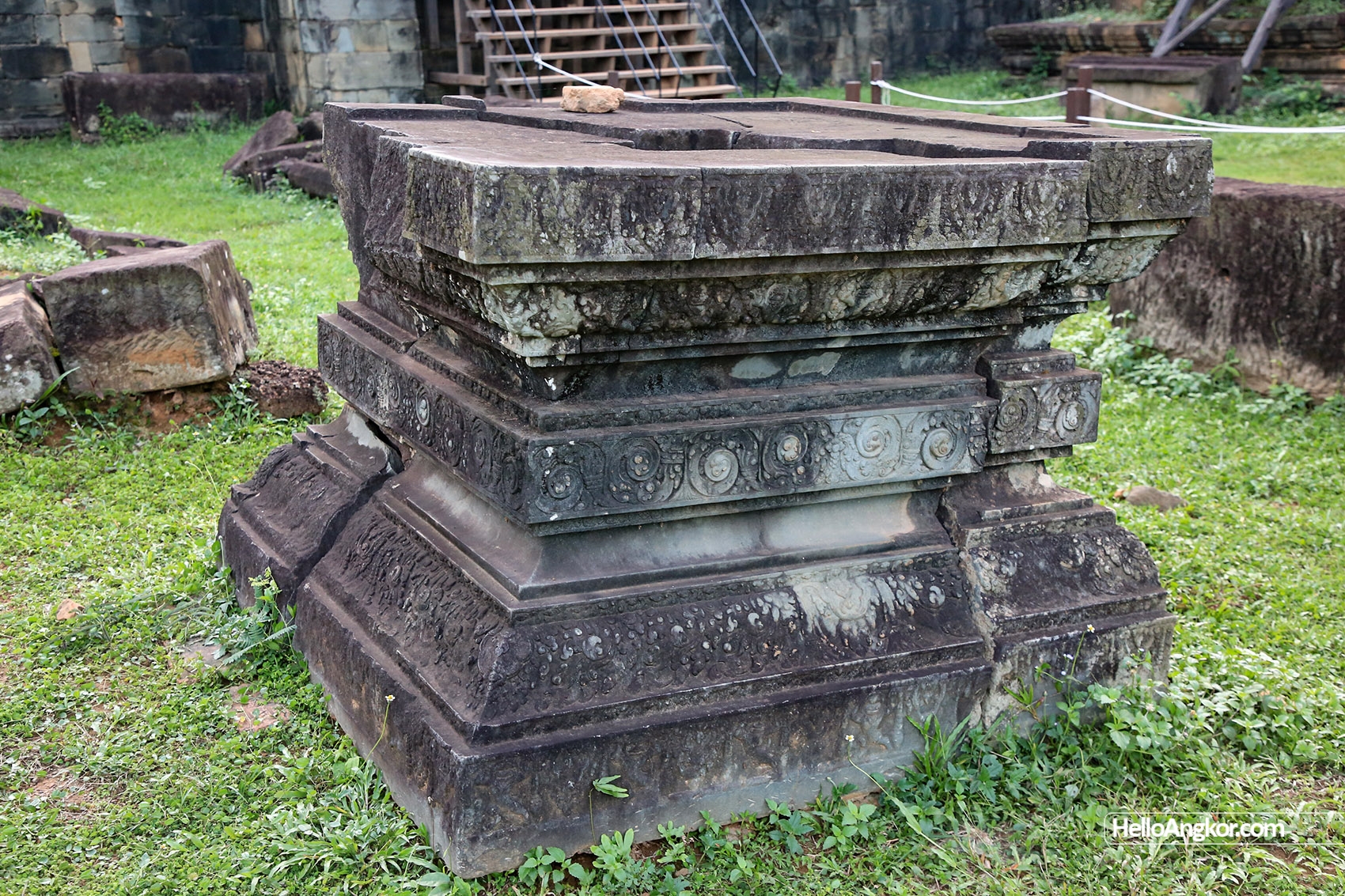


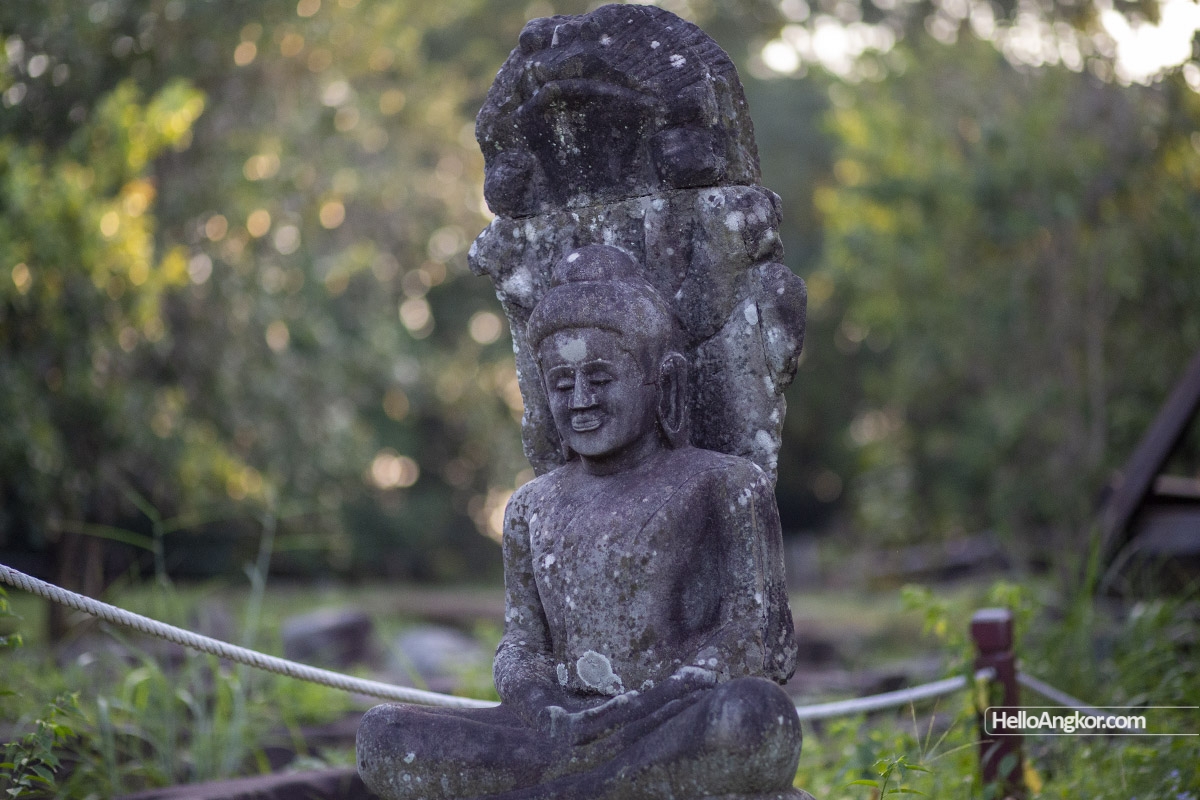
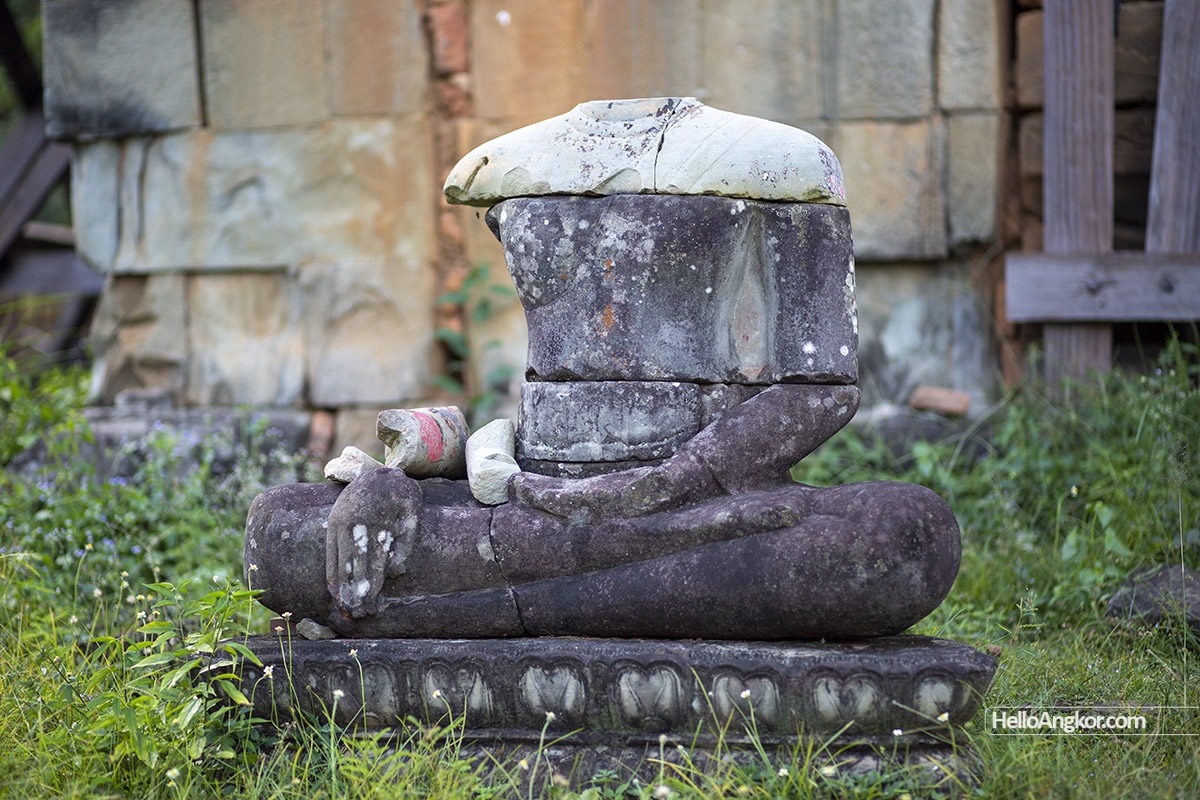
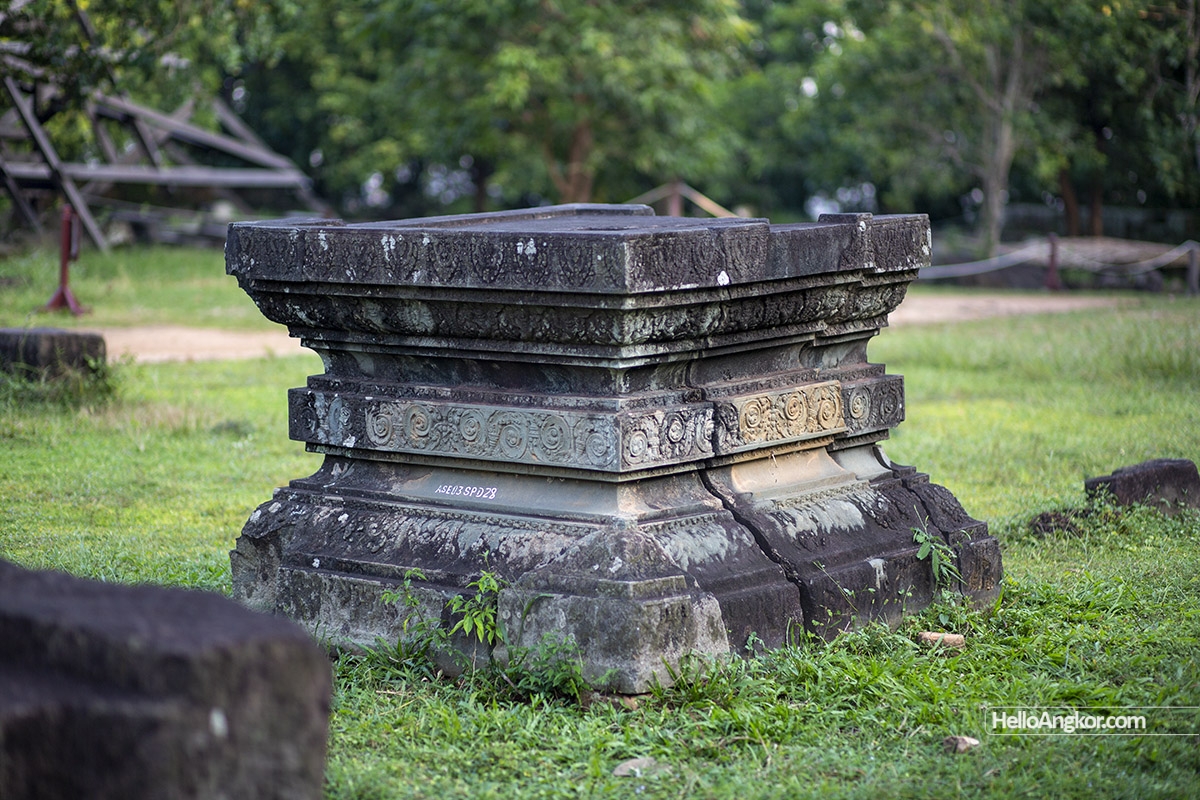
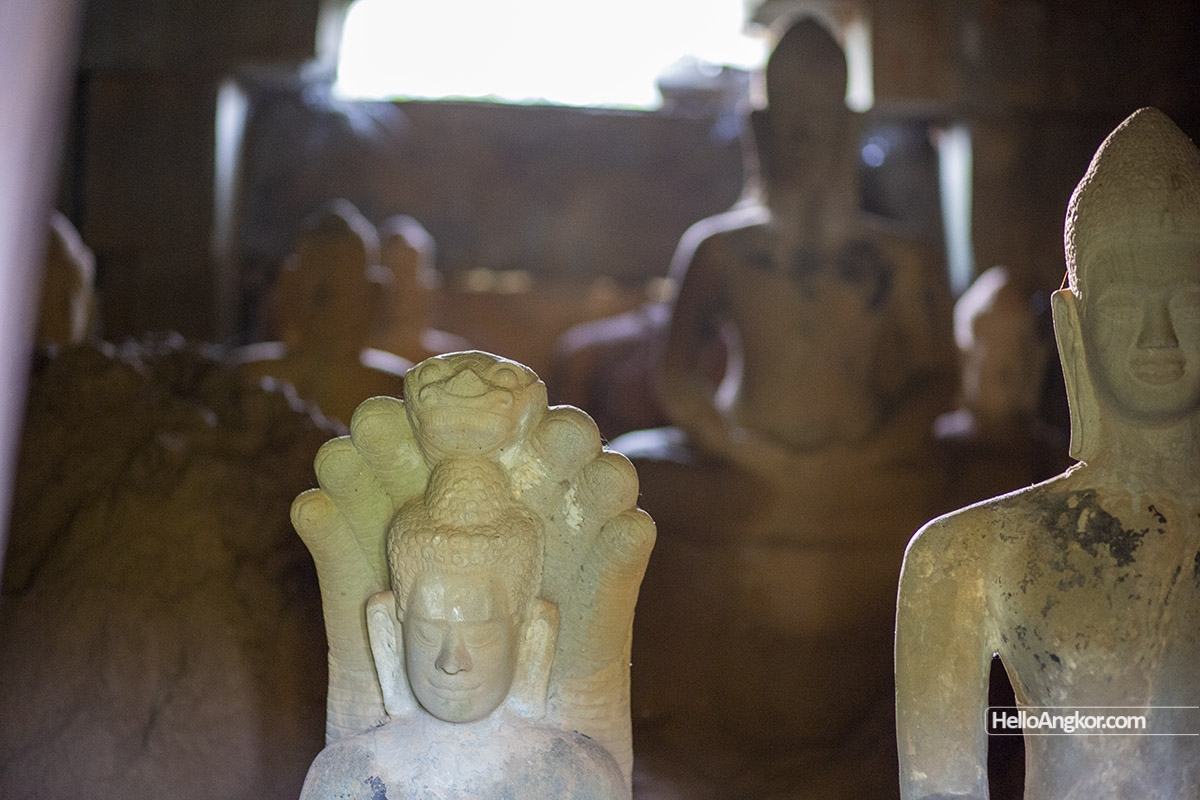
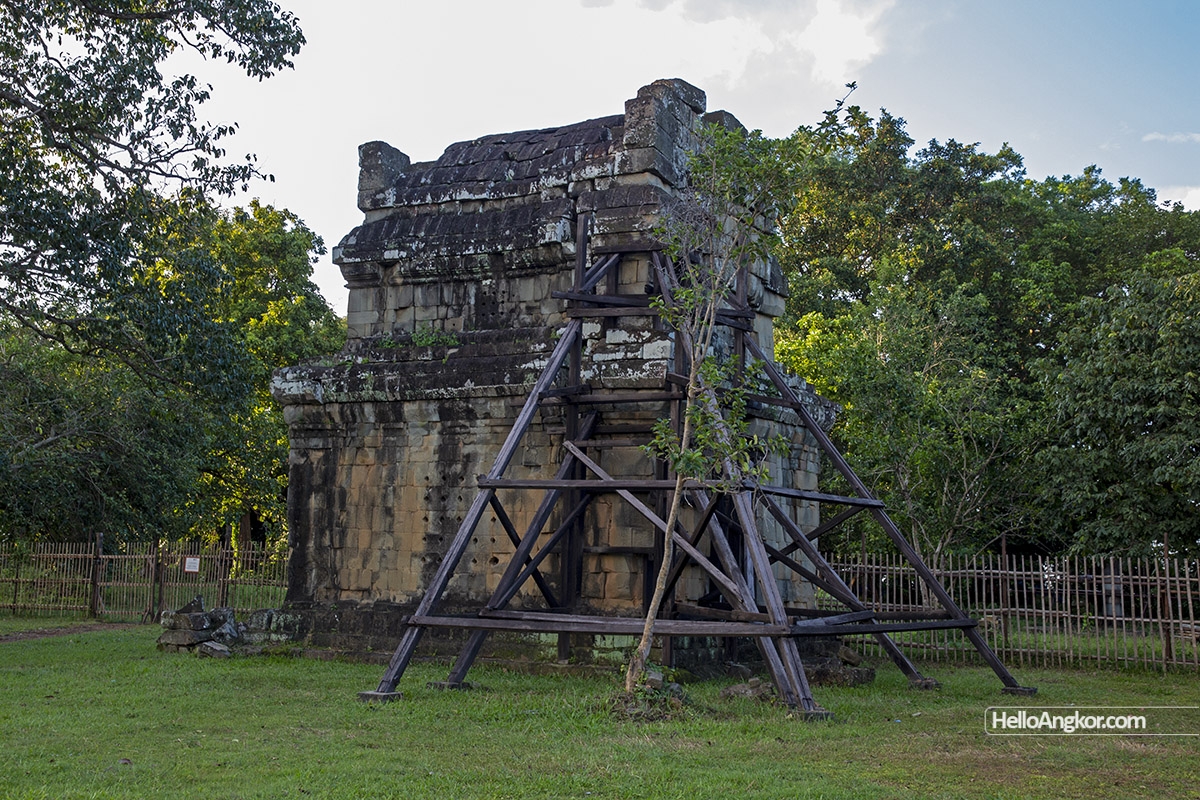
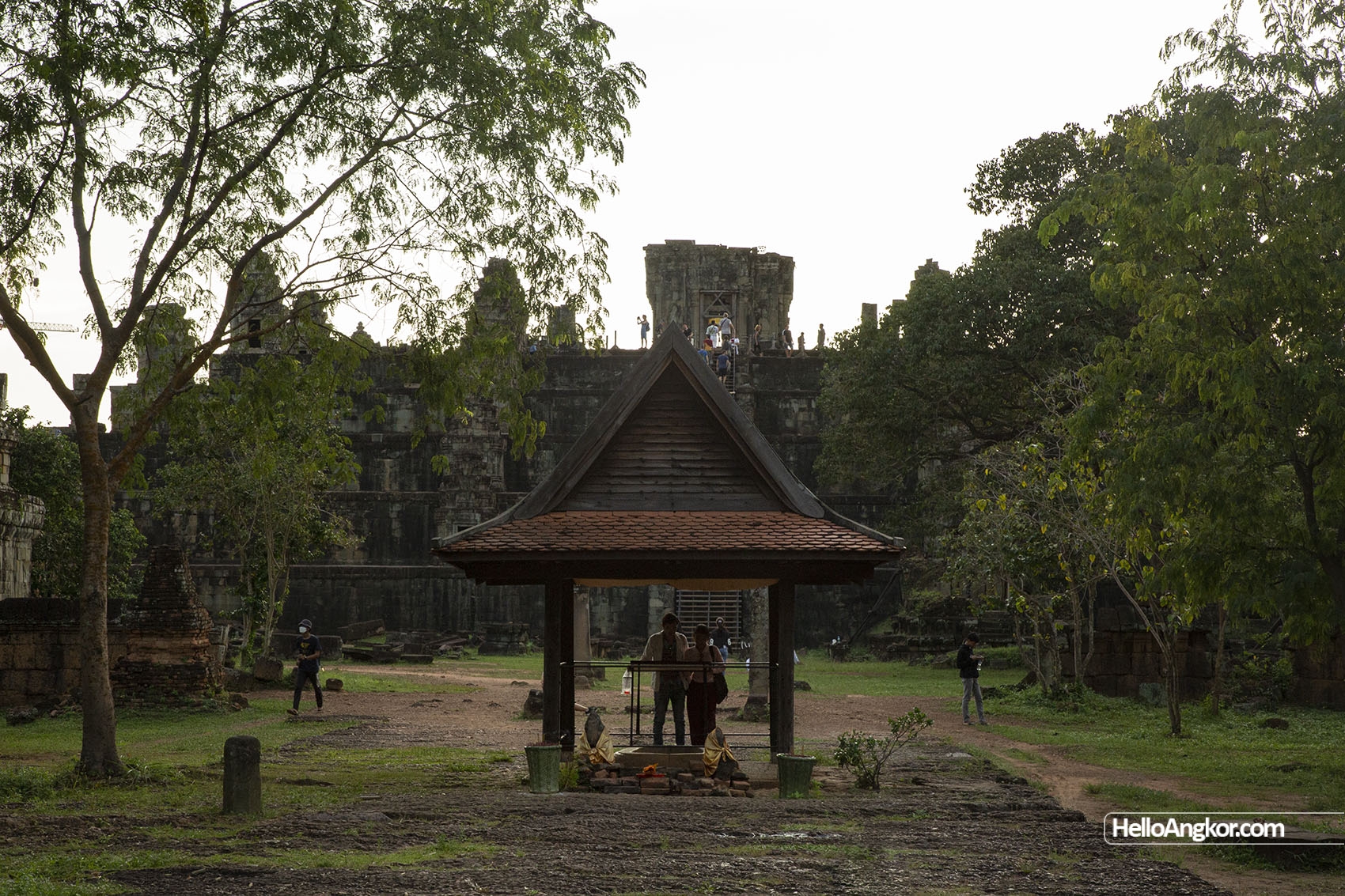
The entrances at the bottom of the mountain were flanked by grand lions and another gopura and enclosure wall (of which little remains) and originally a moat. On the north and west entrances, the lions can still be seen in situ which are some of the finest in Khmer art, more on the lion trail here. Fascinatingly, a causeway once led from the eastern entrance, all the way east and then diagonally southeast to join with the Indratataka Baray and Lolei Temple.
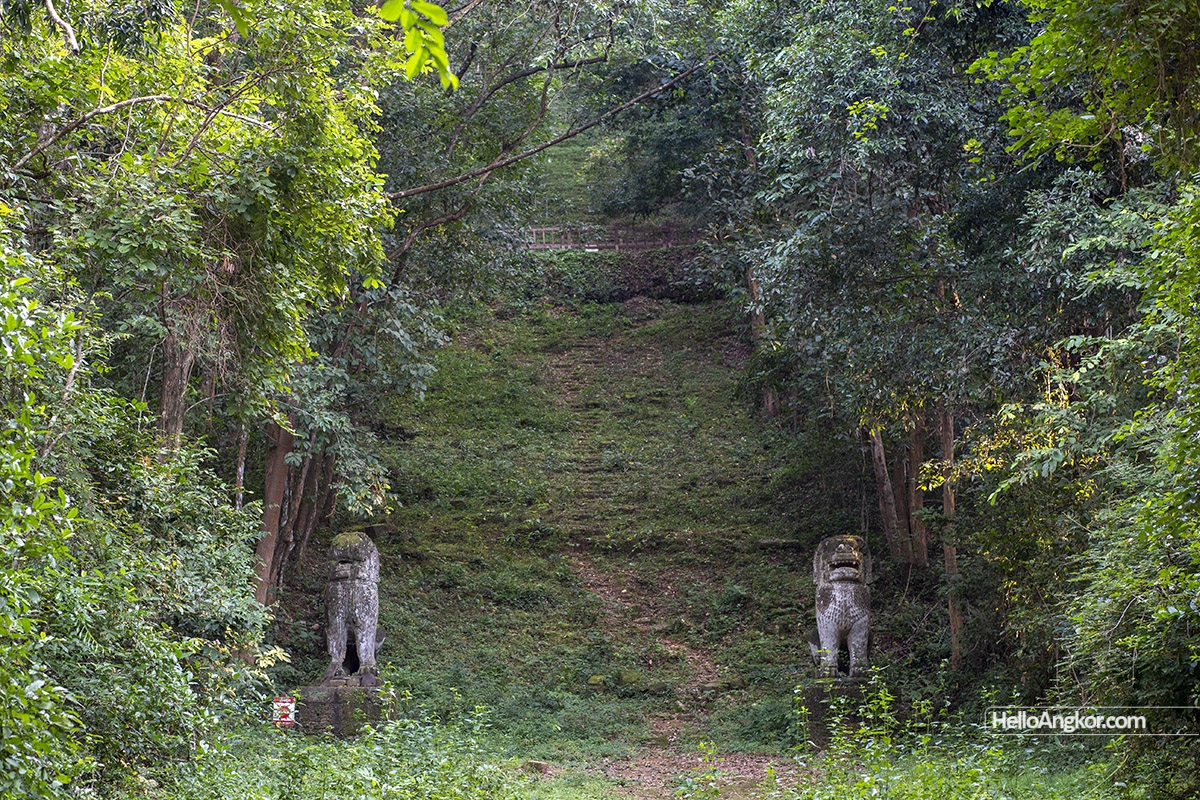
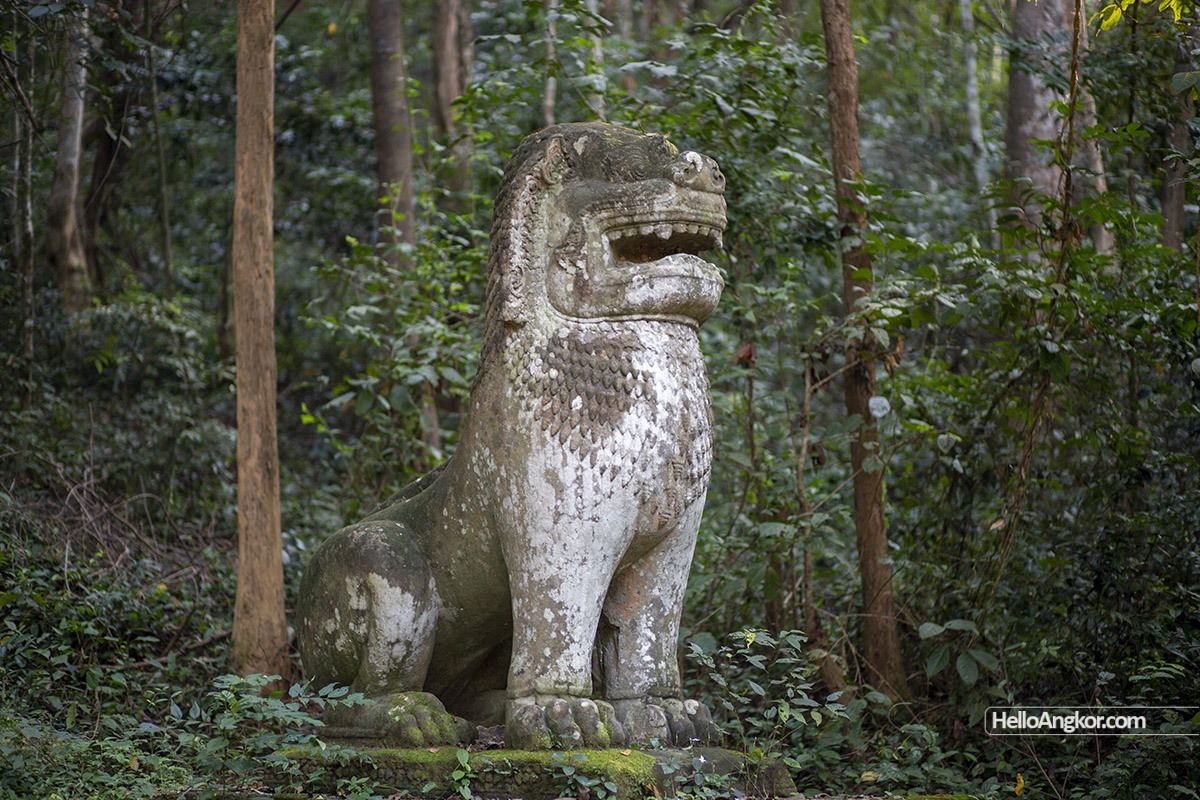
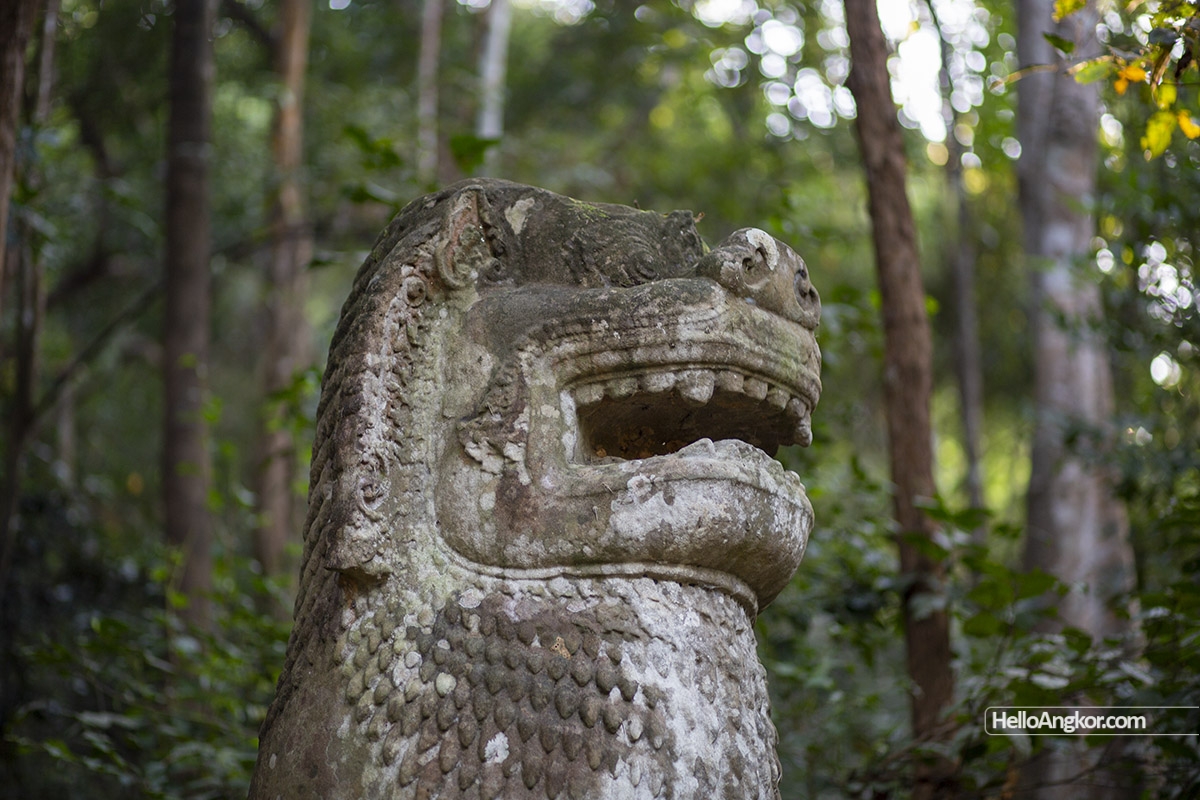
Visiting Tips
It takes around 20 mins to walk the bush trail that winds up to the top of the hill and base of the temple. At this level and on the southern edge of the eastern side you will see a wooden lookout that provides a wonderful view of Angkor Wat and its towers. A little bit out of the range for sharp photos on many phone cameras but a camera with a zoom lens (above 100mm at least) will be able to get great shots.
The entrance to the temple is up the eastern staircase, a mildly steep set of stairs to reach the top where you are offered 360-degree views across to Angkor Wat, the city of Siem Reap, and the Western Baray. Take the southern staircase to go down, and on the trail down the mountain, there are several wooden viewing platforms offering views out over the Western Baray.
There are toilets and drink stalls located opposite the eastern entrance. If you want to see more of the original entrances, and the beautiful massive stone lions that guarded them, check out this trail.
Sunset and Sunrise at Bakheng Temple
Phnom Bakheng is a very popular spot to watch the sunrise and especially so the sunset with a view out over the Western Baray. To this end, its opening hours differ from other sites by opening at 5 AM for the sunrise and for sunset, closing at 7 PM. Be sure to allow enough time to walk up the mountain, and then up the to top of the temple which takes around 20-25 minutes. It can get busy at times, especially on weekends, so go early to secure a good spot.
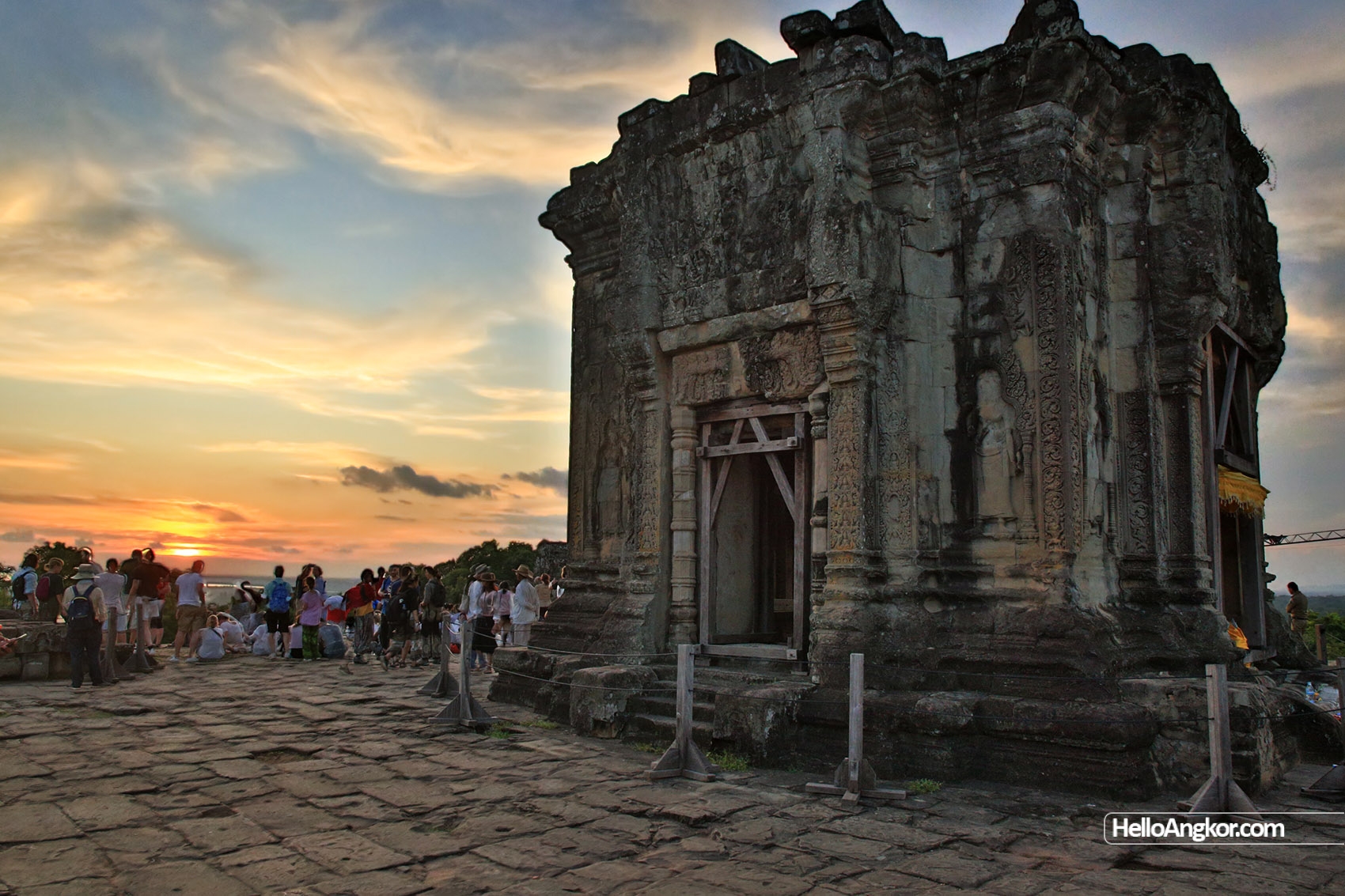
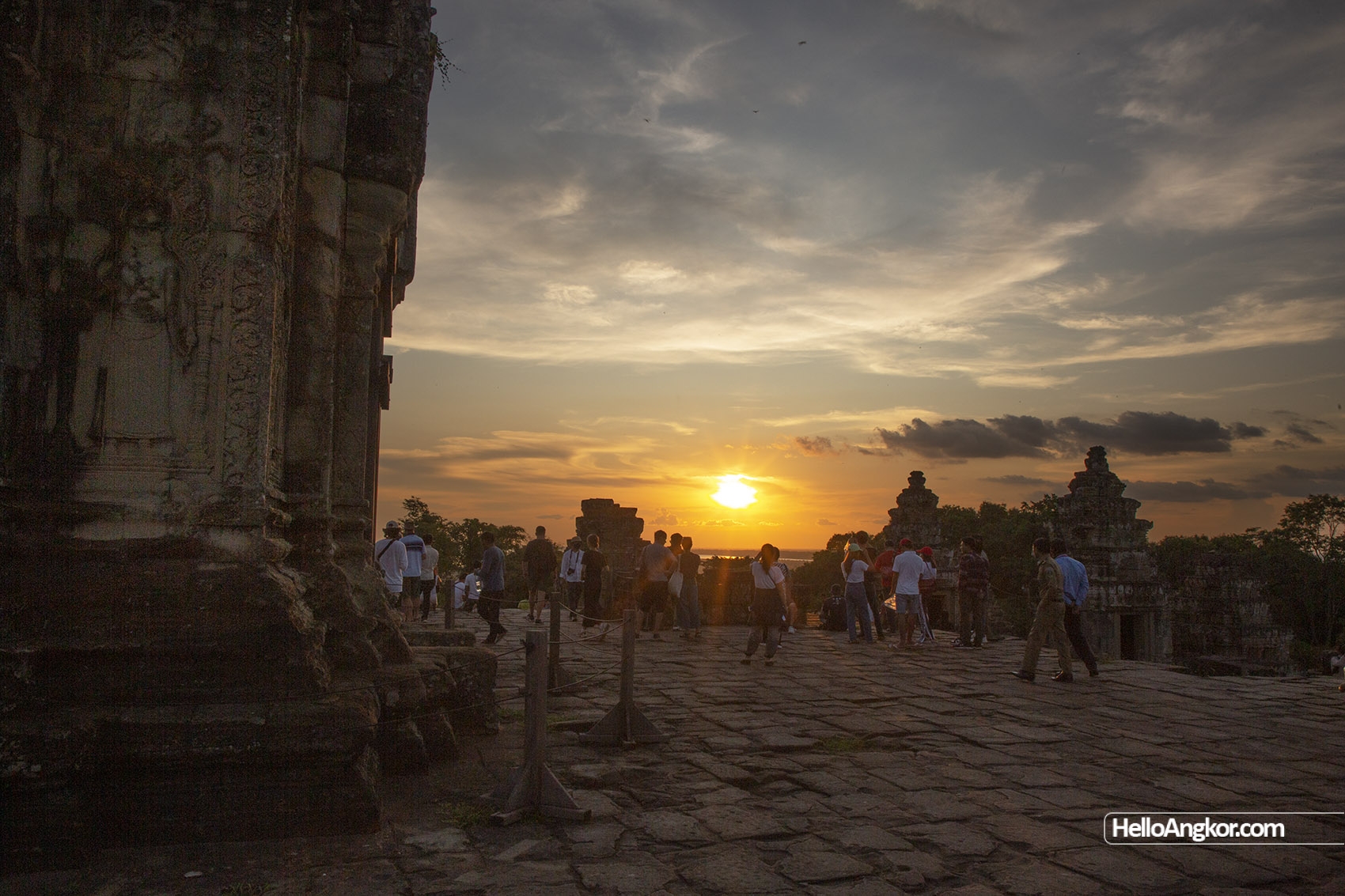
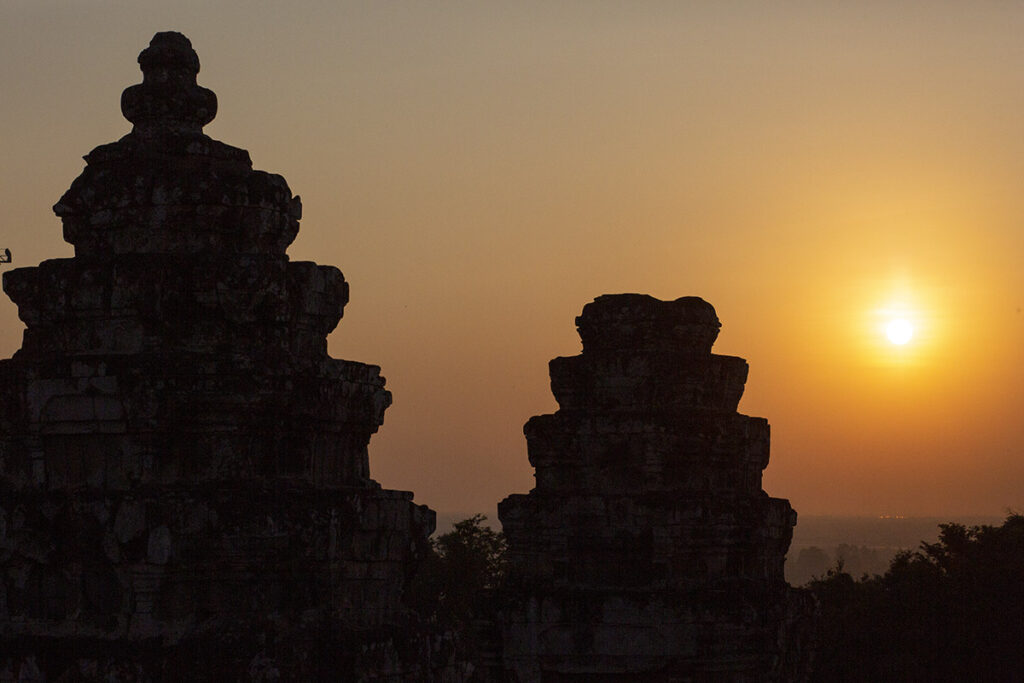
Regardless of the visiting time, you’ll still need an Angkor Pass.
History
In a time well before Angkor Wat, and after successfully taking over the throne after the death of his father, king Yasovarman I (reign 889 – 910) would shift the state capital from Hariharalaya (present-day Roluos) and create a new capital, Yashodharapura, 16km to the northwest. His first major state temple would be atop Phnom Bakheng. In the centuries that followed, this area would grow to become Angkor.
The inscription of Sdak Kok Thom (K. 235) mentions a site named Vnam Kantal (Phnom Kantal) that was eventually linked to being the temple atop Phnom Bakheng or what’s named in that same inscription as Yashodharagiri. It also notes a linga being installed and another inscription at the site (K. 643 and 543) notes a statue of Vishnu (as Pundarikaksa) being installed.
Phnom Bakheng is one of 3 hilltop temples that Yasovarman would go on to build, the others being Phnom Krom to the south and Phnom Bok to the northeast and would inspire the art and construction style for the much-lauded constructions of the Angkor era that would follow.
Post the Angkor-era, perhaps before, Phnom Bakheng would become a Buddhist temple with two inscriptions (K. 285 and 465) dated to the 16th century noting the visit by a high priest who restored Buddhist statues at the site.
In the 17th century, King Ramadhipati I (reign 1642−1658 AD), who had converted to Islam, installed a stele at the site (discovered by Parmentier in 1920) that was written in Arabic, later, researchers would also discover a Muslim grave on the east side of the site.
At some stage, believed to be around the 17th-18th century, as the aforementioned stele was found underneath its mass, a large monumental seated Buddha, and reclining Buddha akin to that seen at Baphoun, was partially established. Created from the masonry of the original temple, ruinous and uncompleted, it would be cleared and dismantled by the French so as to restore the site to its original form.
In the 19th century, the site was also cared for by Buddhist monks from Vietnam who built a pagoda atop the site on the eastern side and introduced the site to none other than Henri Mahout it would seem.
Restoration works
Clearance and restoration works began in the 1920s, by Henri Marchal and Henri Parmentier, and later stabilisation works in 1959. The major restoration works began in 2004 carried out by APSARA National Authority and the World Monuments Fund with quite large financial support from the US government with works ongoing till the present day.
Historical Images – property of EFEO – more at Fonds Cambodge
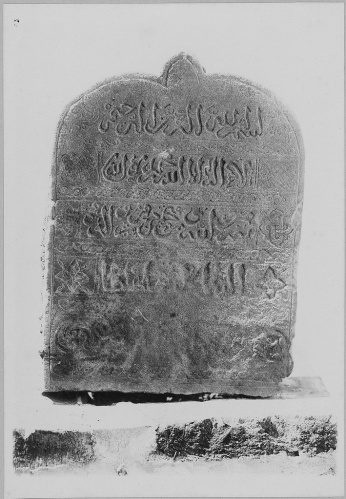
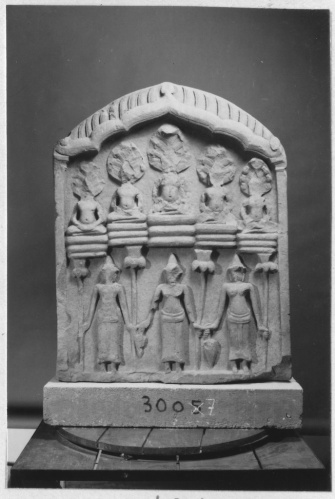
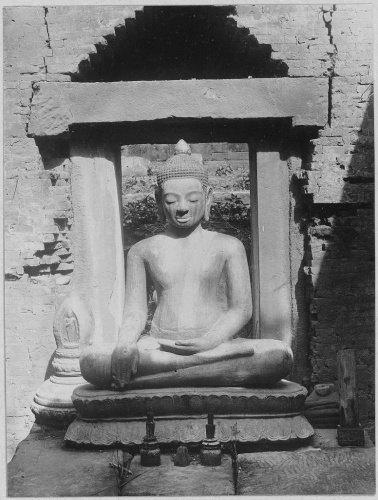
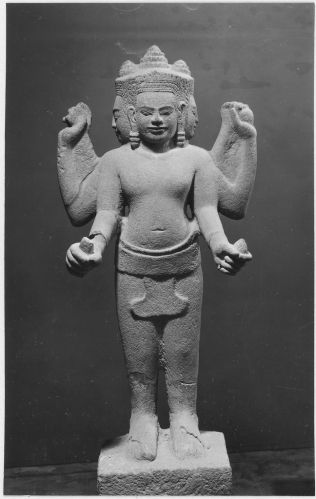
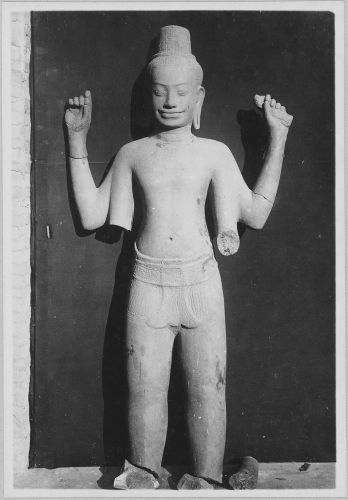

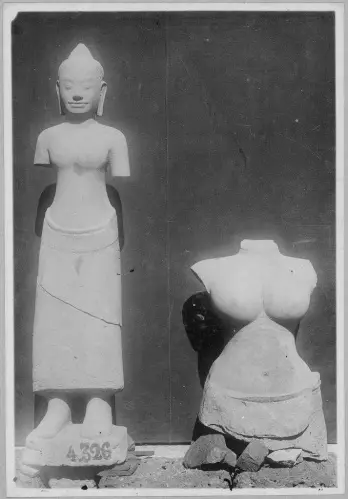
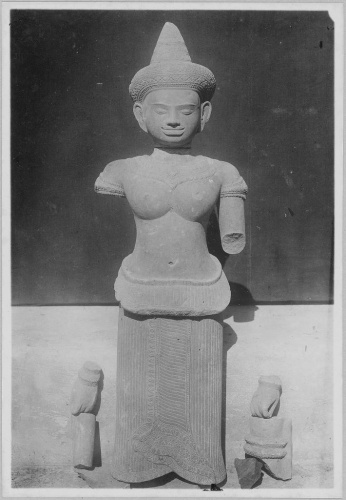
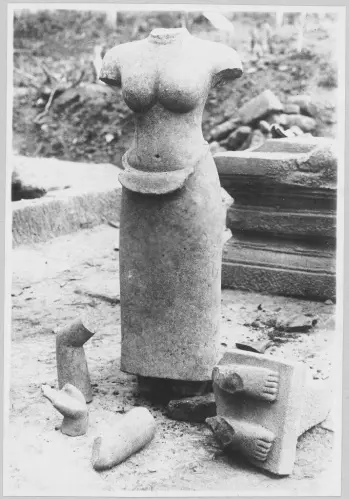
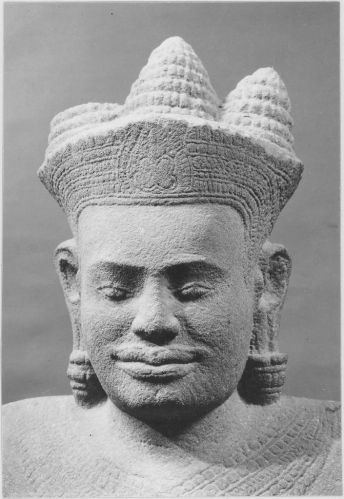
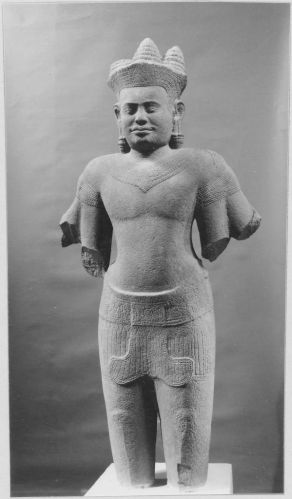
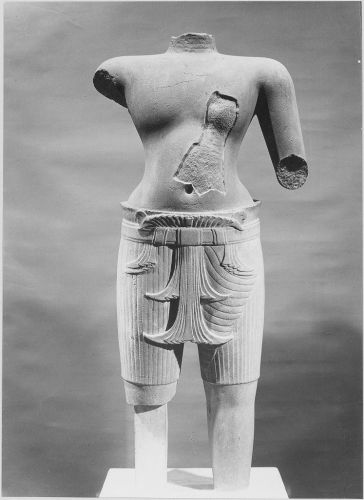

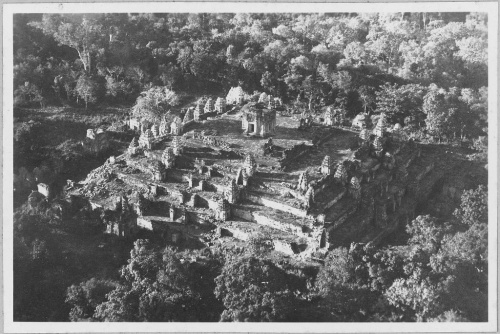
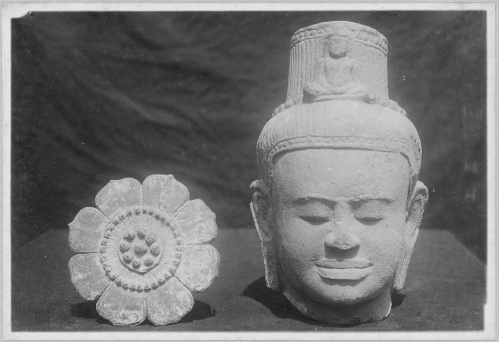
Inscriptions
The site features several inscriptions as noted below along with being mentioned in the inscription of Baksei Chamkrong and Sdak Kok Thom (and others).
- K. 683 – 3 lines of Sanskrit – JFCA 8, p. 116
- K. 684 – 18 lines of Khmer – IC IV, p. 106
- K. 729 – unknown
- K. 285 – stele – 31 + 16 lines of Khmer text – NIC I, p. 26-27
- K. 464 – 2 lines of Sanskrit + 13 lines of Khmer – Cœdès 1911, p. 396-398
- K. 465 – 26 lines of Khmer – Khin Sok 1978, p. 271-280 ; NIC I, p. 20-25
- K. 558 – 3 three lines of Khmer – Finot 1925, p. 363-365
- K. 1157 – stele – illegible
References and Further Reading
- WMF, Phnom Bakheng Workshop on Public Interpretation, 2005
- Goloubew Victor. IV. Le Phnom Bâkhèn et la ville de Yaçovarman. In: Bulletin de l’Ecole française d’Extrême-Orient. Tome 33, 1933. pp. 319-344.
- Filliozat Jean. Le symbolisme du monument du Phnom Bàkhèn. In: Bulletin de l’Ecole française d’Extrême-Orient. Tome 44 N°2, 1951. pp. 527-554.
Map
Site Info
- Site Name: Phnom Bakheng (Pr.) Khmer Name: ប្រាសាទភ្នំបាខែង
- Reference ID: HA16497 | Last Update: September 21st, 2022
- Date/Era: 9th century
- Tags/Group: 9th Century, Angkor, Angkor Small Circuit, Map: Angkor's Top 30 Temples & Ancient Sites, Temples
- Location: Siem Reap Province > Krong Siem Reab > Sangkat Kouk Chak > Kôk Chan Village
- MoCFA ID: 425
- IK Number: 496
- Inscription Number/s: K. 683, 684, 729, 285, 464, 465, 558, 1157

